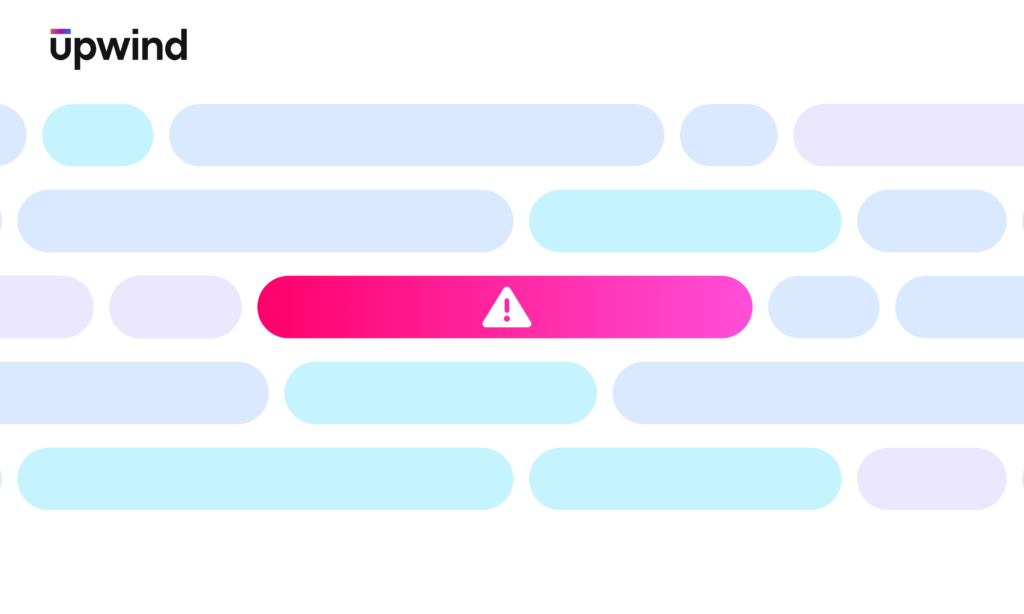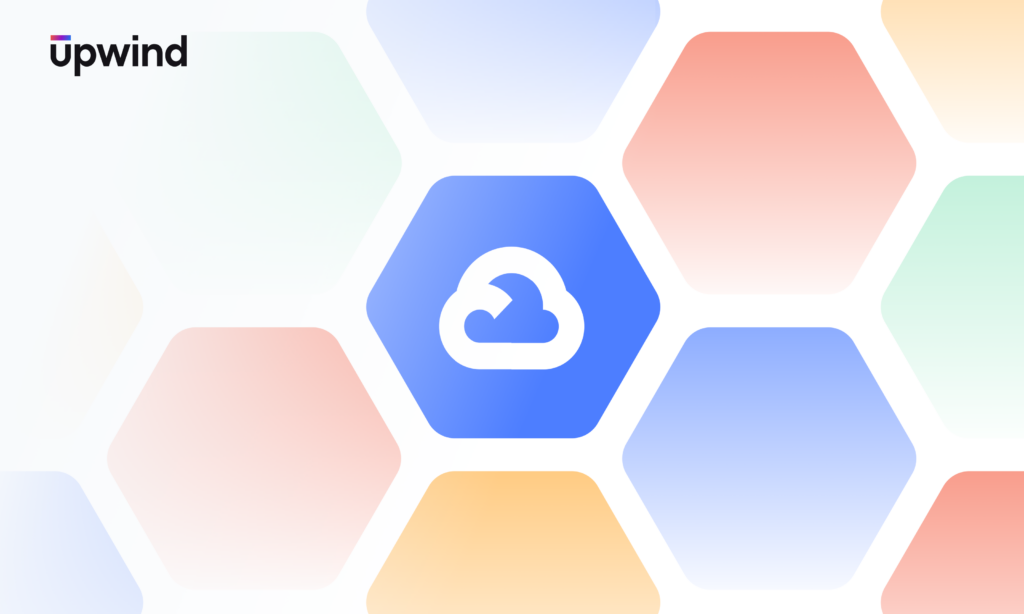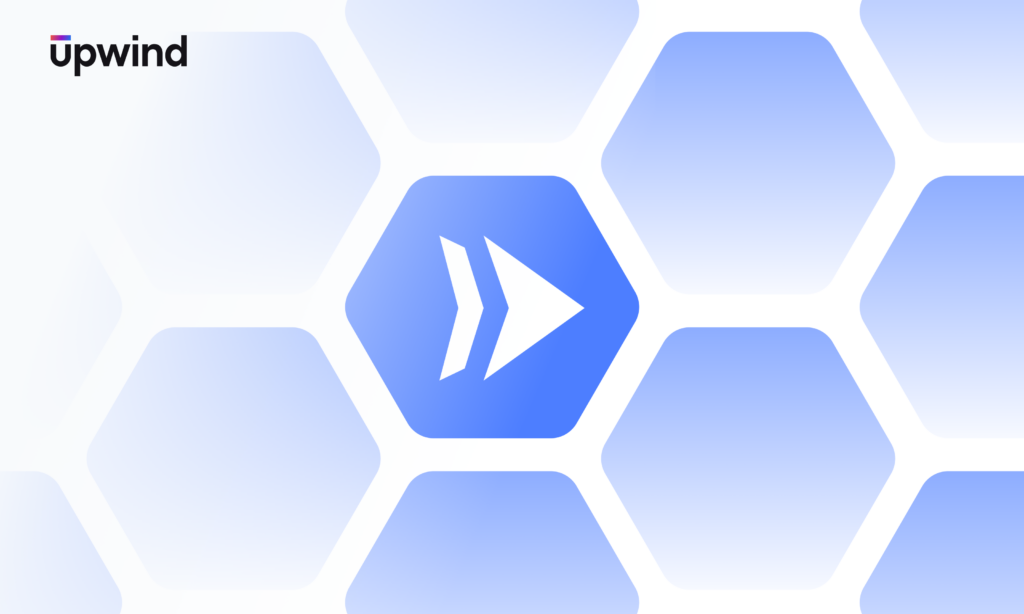
In today’s increasingly cloud-centric business landscape, securing your cloud environment is crucial. The growth and dynamic nature of attack surfaces often make it difficult for security teams to identify and address their most critical risks, resulting in a lack of clear prioritization and delaying remediation.
Upwind’s Cloud Security Platform actively addresses this challenge by leveraging a combination of runtime and build-time context to intelligently prioritize risks and threats.
Customers consistently tell us that Upwind’s solution to this problem effectively cuts 95 percent of alert noise, prioritizing critical risks based on an end-to-end, real-time view of their cloud infrastructure and applications.
The Difficulty in Understanding the Real Critical Risks
For many organizations, finding and evaluating risks can be the most time-consuming and challenging part of cybersecurity. Ever-expanding attack surfaces mean new risks are introduced constantly, making it difficult to maintain visibility and understanding of critical risks and open attack paths.

In order to effectively prioritize risk, organizations need to not only implement best practices during build time, but also actively monitor what’s going on with their infrastructure and applications at runtime – pairing “shift-left” security practices with “shift-right” runtime insights. It is only with this fully integrated perspective on your cloud infrastructure that risks can effectively be prioritized.
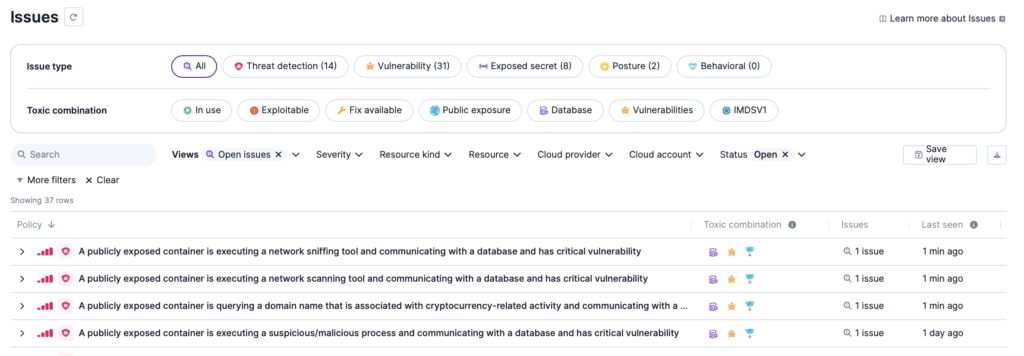
Upwind provides this end-to-end visibility by continually performing DevOps-grade deep assessments of your cloud environment, discovering everything you run in the cloud and keeping this inventory up-to-date. We systemically correlate this information with CI/CD awareness and build-time data, paired with continuous analysis of runtime intelligence including context from Layers 3, 4, and 7, DNS, APIs, and process-level insights.
Reduce Time to Remediation with Automated Risk Analysis
With this deep context and real-time view of your cloud infrastructure and applications, Upwind is able to accurately and consistently prioritize your most critical risks and threats, helping your teams focus and actively streamline remediation efforts.
Upwind helps security teams cut down time to remediation by prioritizing critical risks and conducting real-time attack path analysis, and by centralizing all of this information on the Issues page within our platform.

The Issues page aggregates all risk-related information, displaying it on a primary page that consolidates “toxic combination” findings – these represent your most “severe risks” where findings include multiple factors including threats, exposed secrets, vulnerabilities, and misconfigurations.
Upwind’s risk prioritization capabilities provide customers with a number of benefits, including:
- Simplified risk analysis: risks are prioritized based on finding factors, making it easy to identify and understand critical risks and attack paths
- Centralized findings: critical risks are aggregated in one central location on the Issues page, streamlining investigations and helping you manage and resolve issues effectively
- Streamlined operations: remove the need for manual checks, point solutions and fragmented tools by utilizing Upwind’s unified security platform with comprehensive visibility that enables faster response.
- Real-time risk prioritization: Upwind eBPF sensor analyzes cloud environments in real time, immediately identifying critical risks and threats, cutting down on both notification & remediation time.
In short, Upwind finds and prioritizes your most critical risks backed by runtime facts and displays them in one centralized place on the Issues page, revealing the toxic combinations of threats, exposed secrets, vulnerabilities, and misconfigurations that pose the most critical security risks to your organization.
Upwind’s Issues page is designed to give you rich context about your current critical risks in a consolidated location, allowing you to focus on closing any security gaps and staying ahead of potential threats.
How Upwind Prioritizes Critical Risks & Toxic Combinations
The Issues page makes it simple for security teams to rapidly view their most critical risks and remediation tasks. This aggregated risk information is crucial for streamlining remediation, as each identified critical issue is often a “toxic combination” of threats, vulnerabilities and misconfigurations that would otherwise take time and effort to correlate.
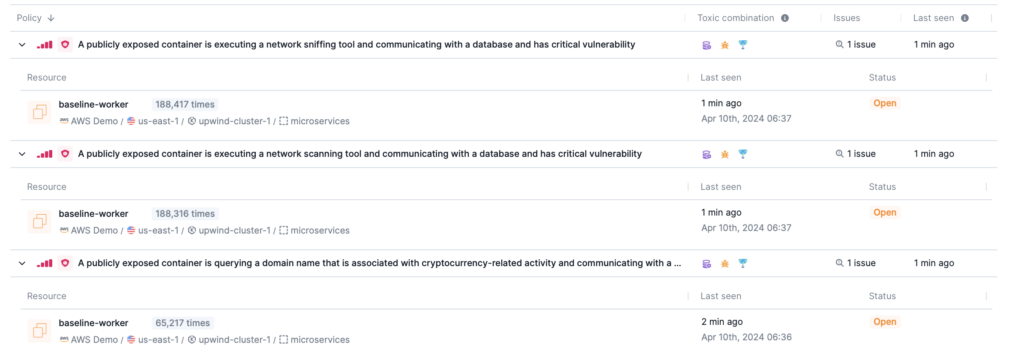
Leading risk indicators and toxic combinations include:
- Threat detections: active threats detected at runtime
- Exposed secrets: secrets that contain a critical vulnerability and are exposed to the Internet
- Trending vulnerabilities: critical vulnerabilities that Upwind’s cyber experts have identified as currently trending in potential attacks
- Critical vulnerabilities: vulnerabilities that the Upwind platform has identified as having conditions such as being in use, having active Internet exposure or accessing sensitive data
- Posture findings: misconfigurations and other posture findings that also include internet exposure, critical vulnerabilities or communication with sensitive data
- Abnormal resource behavior: unusual resource behavior that indicates compromise, paired with a critical vulnerability finding or other relevant context
Each toxic combination is designed to surface your most critical issues that should be prioritized for mitigation or remediation.
Real-time Mitigation and Remediation
Upwind’s Issues page gives you visibility of your organization’s most critical risks over time, including metrics on how many issues have been created versus how many were resolved, common and critical risks, and a risk breakdown by cloud account.
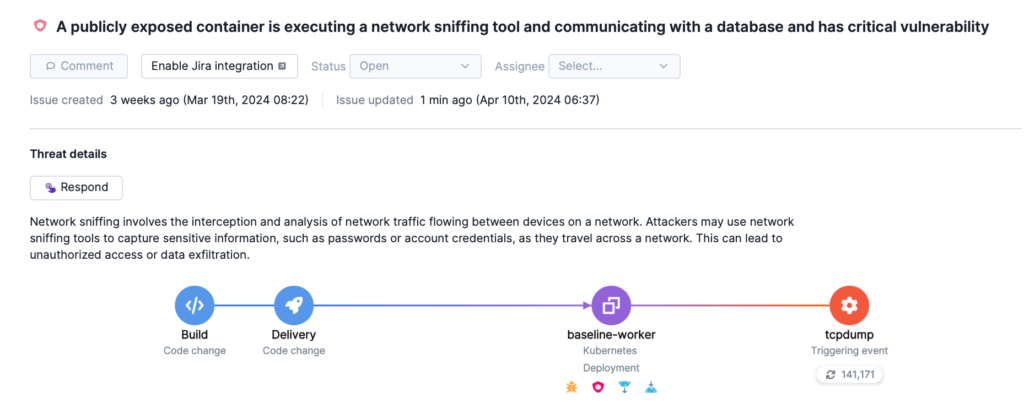
In addition to identifying your most common critical risks and risk profile over time, Upwind also gives you the ability to mitigate critical risks directly within the Upwind platform.
Issue mitigation options include:
- For threat-based issues: you can kill a malicious process
- For vulnerability-based issues: receive context on if there is a fix available, and you can assign a Jira ticket to your security team member or receive assistance from a member of Upwind’s expert vulnerability remediation team
- For exposed secret and/or posture issues: use the insights provided to adjust the misconfiguration and assign a Jira ticket to a security team member
For all of the above mitigation and remediation options, you can manage the issues directly within the Upwind platform and mark them as resolved upon successful completion.
Learn More About How Upwind Prioritizes Critical Risks
Starting today, Upwind customers can access and utilize Upwind’s Issues module. For more information on how Upwind prioritizes critical risks and issues, visit the Upwind Documentation Center (login required) or send us a note to [email protected].

